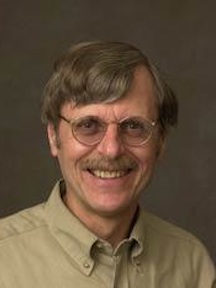By Meghan Barrett
Many of the world’s greatest classics, obviously, were not written in English; from Sophocles’ Oedipus Rex to Leo Tolstoy’s Anna Karenina, great works of literature can find themselves translated into a wide variety of languages. But the work that goes into translating these famous novels, plays, and poems is rarely discussed, since readers are more naturally focused on assessing the text… not the quality of the translation.
The role of the translator, according to Edith Grossman in Why Translation Matters (Yale University Press, 2011), is to create a work in the translated language that will allow new readers to “perceive the text, emotionally and artistically, in a manner that parallels and corresponds to the esthetic experience of its first readers.” The way to achieve this goal, however, is not universally agreed upon by translators. The astute reader will note that there are often multiple published translations of each great work of literature. These translators—based on their proficiency in the original language, familiarity with the text, and theory concerning the ‘best’ way to translate—can generate numerous, sometimes vastly different, variations based on the same original text.
Eugene Stelzig (ΦBK, University of Pennsylvania, 1965) has occasionally served as a translator of German works, mostly poems by the likes of Herman Hesse and Friedrich Schiller. Recently, Stelzig tackled a much more ambitious project—Faust by Johann Wolfgang von Goethe. Stelzig grew up speaking German, and said of Goethe that “Faust is part of the German culture and language… growing up in the German-speaking world, Goethe is kind of like Shakespeare; like how everyone knows Hamlet, even if you’ve never read it.”
Faust is a particularly tricky work to translate because it is both old (first published in 1790) and has several passages in different verse forms. Stelzig wrote his translation in 2015 despite several existing translations because he felt there was something missing from the current set. One of his favorite translations by Stuart Atkins is very accurate, Stelzig notes, as Atkins is very familiar with 18th century German and thus kept very close to the language used in the text. However, Atkins neglected to retain the rhyme that Goethe used throughout the work, unlike translators such as Jonas Kaufmann who focused on keeping the lyricism of the original. How to stay true to the original work in content, language, form, and tone is the perennial struggle of all translators; the way they balance these elements is what makes each translation unique.
Stelzig chose to keep much of the original language, including the somewhat antiquated metaphors like weaving with yarn and shuttles, but also strove to keep the verse forms used in the original version. The process of translating Faust took over a year to complete as he worked through the play line by line, page by page, striving not to look at any other translations. Knowing German as well as he does certainly helped, but often Stelzig found himself consulting German-English dictionaries and other resources to find the word best suiting the denotation and connotation of the original text. In March of 2016, Stelzig had the work performed as a reading to allow him to hear it aloud and make more revisions before submitting it for publication.
While Stelzig notes the importance of Faust to the German-speaking world, he also concedes that Faust is rarely staged in America. And Faust is only one example of a classic work that doesn’t receive the same level of esteem around the world as in its country of origin. Better translations that properly convey the emotive significance of the original text can only serve to make each literary work more globally appreciated and bring various cultures together over the hard work of these rarely appreciated writers—the literary translators.
Meghan Barrett is a senior earning her BS in biology and creative writing at SUNY Geneseo. She is president of Alpha Delta Epsilon regional sorority and a proud member of the Alpha Delta of New York Chapter of Phi Beta Kappa at SUNY Geneseo.




